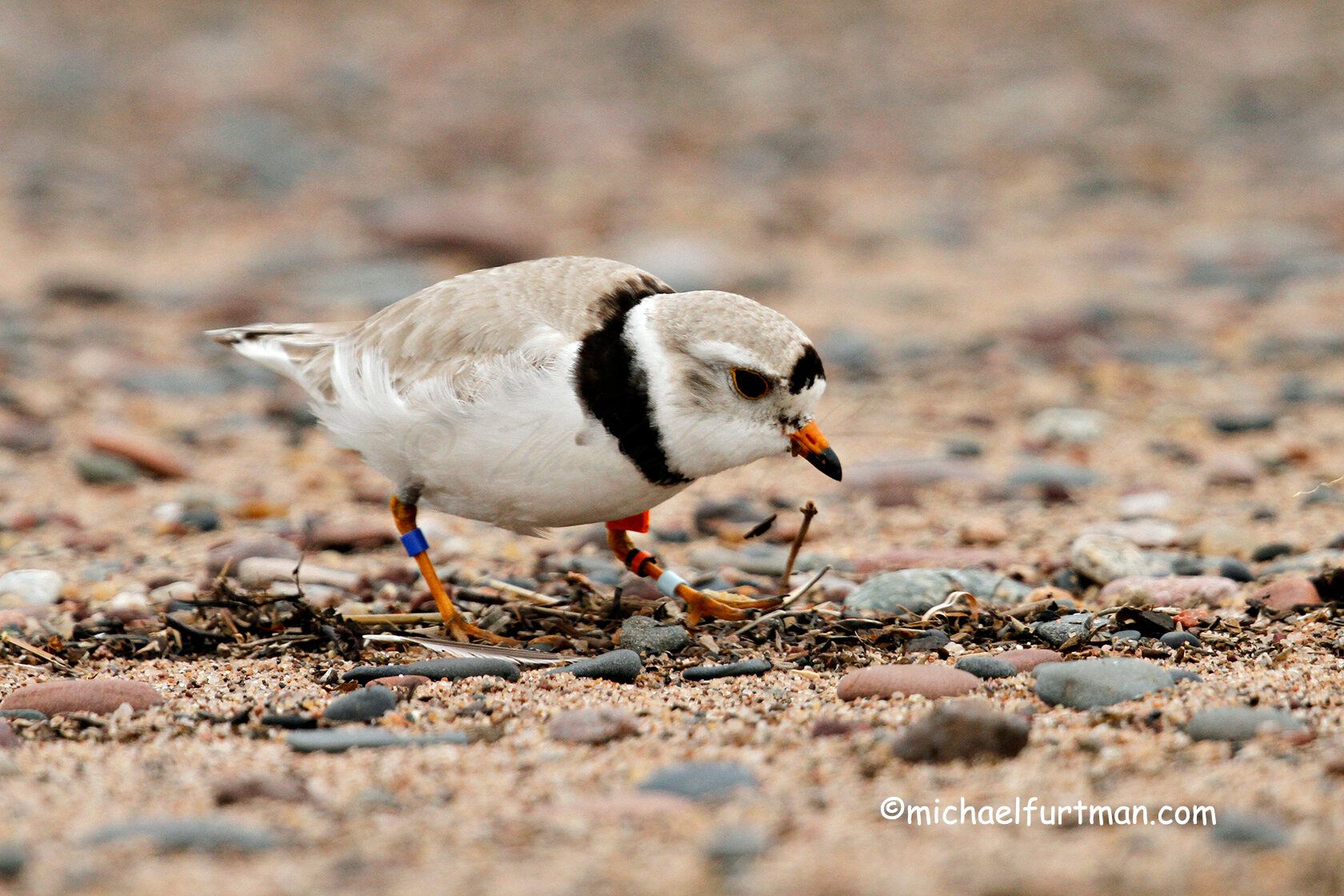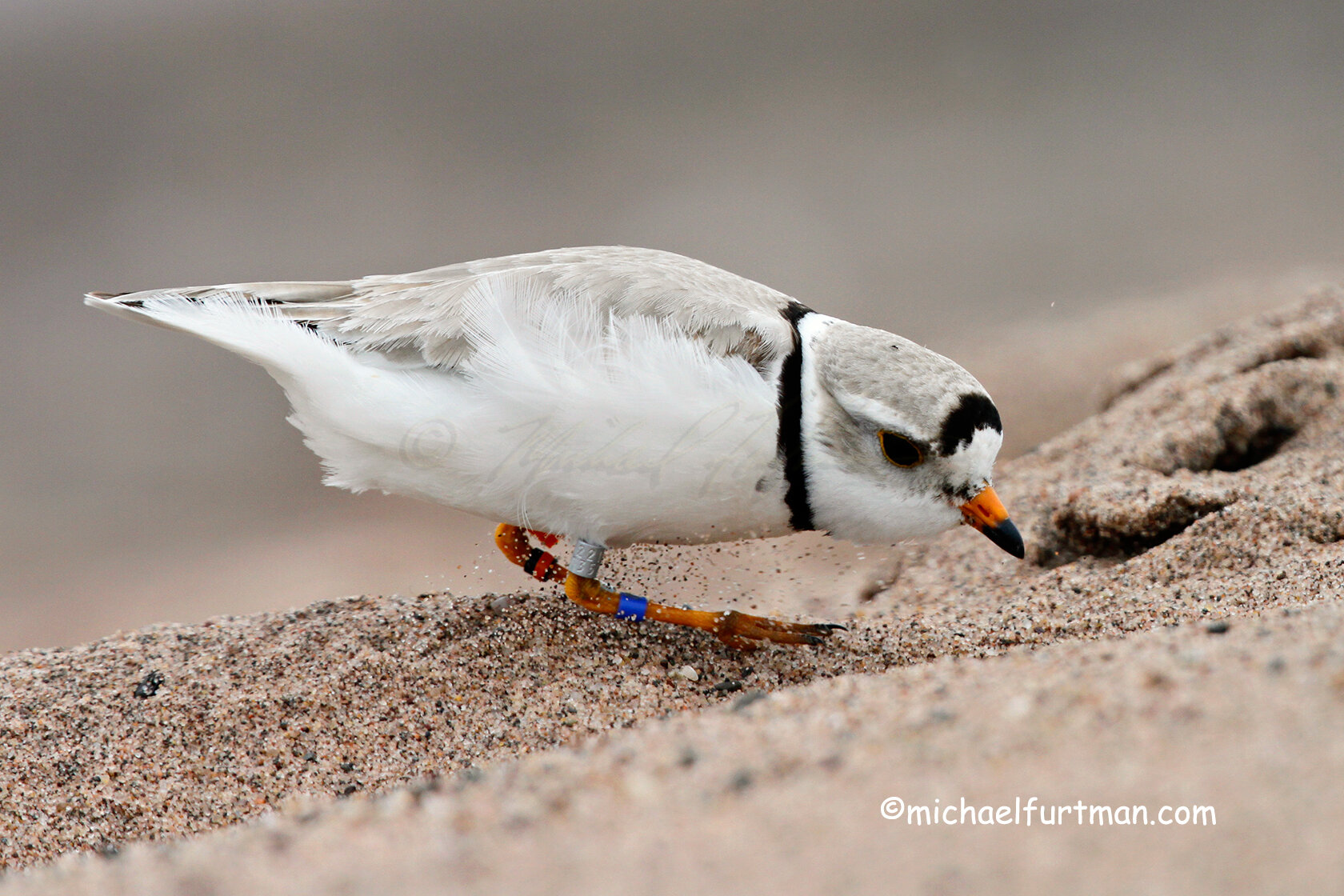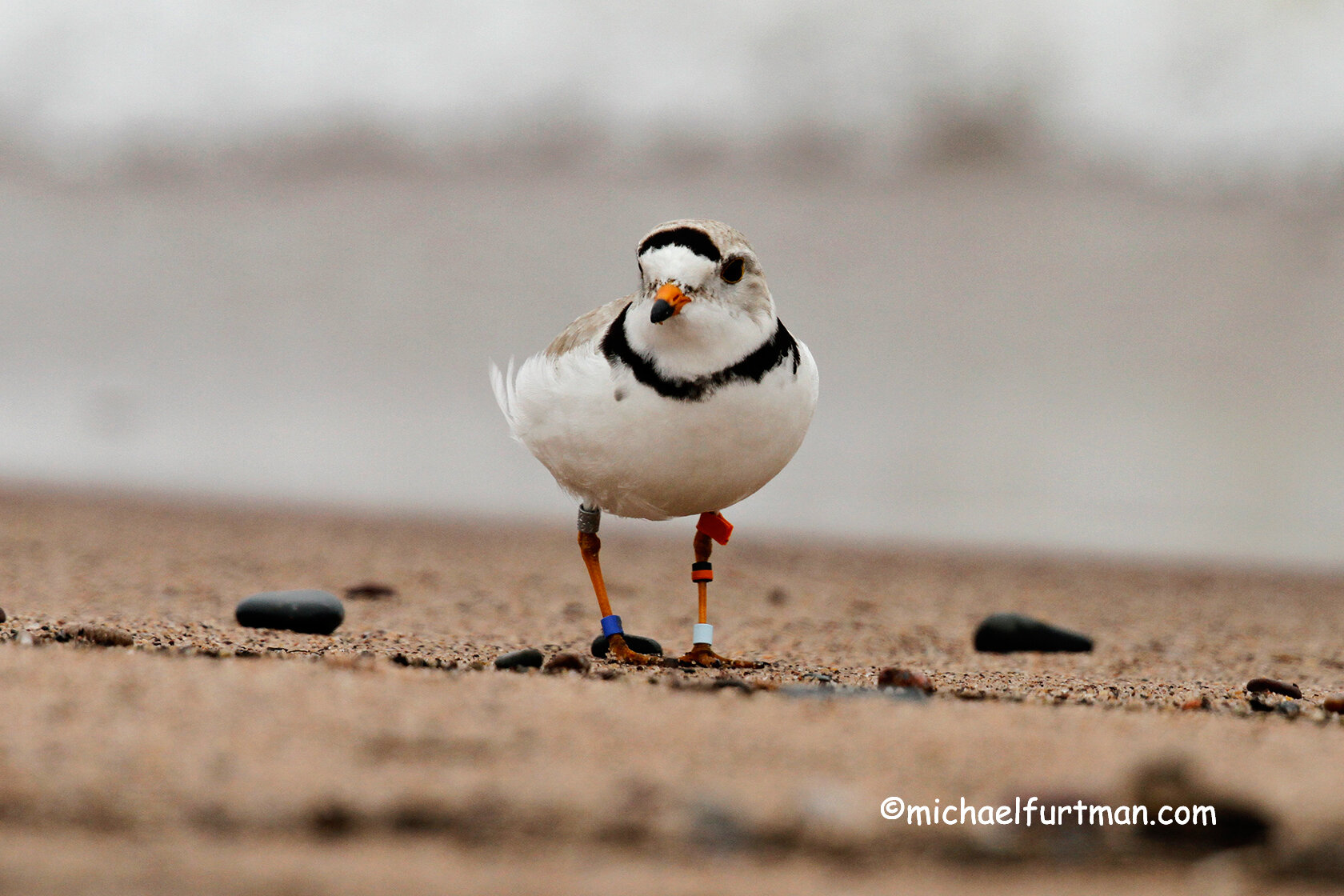
Piping Plover Project
May 1 - June 15 Migration to the Great Lakes
Piping Plovers are extremely rare shorebirds in the Great Lakes Region and were listed as endangered in 1986 under the U.S. Endangered Species Act. For years the St. Louis River Alliance has been working with state and federal agencies to create a favorable habitat for nesting Plovers on Minnesota and Wisconsin point beaches.
The Piping Plovers require dry sand and cobble for their nests. Due to shoreline development, public recreation, predators, human disturbance and extreme weather events, Piping Plover habitat is deeply affected.
The St. Louis River Alliance continues to monitor Piping Plover activity on Minnesota and Wisconsin Point, while also educating the community on the importance of keeping this shorebird protected.
Watch this short video to learn more about the Piping Plover!
About Piping Plover
When to expect plovers
Piping Plovers are endangered shorebirds that begin showing up on Minnesota & Wisconsin Point beaches Mid-April. These endangered birds will begin nesting and breeding on the beaches from May to early August. Piping Plovers are known to leave the Great Lakes area by September and travel to their southern winter migration locations along the Atlantic and Gulf coasts.
Identify Piping Plover
Piping Plover weighs nearly 1-2 oz and is 6-6.5 inches long. They have light sand-colored plumage, bright orange legs, and a short stout orange bill with a black tip. There are two single dark bands, one around the neck and one across the forehead between the eyes.
Detriments to Piping Plover Habitat
Piping Plover requires dry sand and cobble for their nests. Due to shoreline development, public recreation, predators, human disturbance and extreme weather events, Piping Plover habitat is deeply affected.
Ways you can help
Keep your dogs leashed
Roaming pets can chase and disturb nesting Piping Plovers, resulting in nest abandonment and/or smashed eggs. Follow public leash laws and avoid walking in the dry, soft sand where Piping Plovers nest. Play it safe and walk in the wet sand where the Plovers do not nest.Pack out your food waste & garbage
Predators are a significant threat to the Piping Plover. Pack out your food waste and garbage to avoid attracting predators and scavengers that will endanger Piping Plover adults, chicks and eggs.
Common predators that hunt Piping Plovers and their eggs include gulls, crows, merlins, coyotes, and foxes. Many public entrances on Minnesota & Wisconsin Point have garbage cans, so please use them!Stay away from nest enclosures and posted Piping Plover breeding areas
If you happen to see a nest site, walk along the wet sand close to the water’s edge. Observe and obey any closed area fences and enjoy watching Plovers from a distance!Report sightings of Piping Plover nests
If your encounter a Piping Plover, pair of Plovers, or nest, report the sighting to the St. Louis River Alliance and we will share that information with our partners. Please email Kris@StLouisRiver.orgwith the location, description of bird, amount of birds and any other details that seem relevant!











